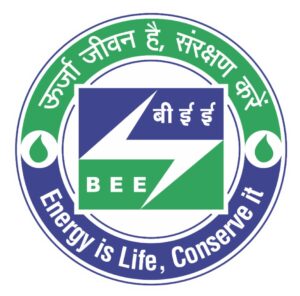Bureau Of Energy Efficiency (BEE)
Understanding BEE Certification: Standards, Labels, and Benefits for Energy Efficient Products
Ensure Indian market access with Our BEE Services

Introduction To BEE Certification
Bureau of Energy Efficiency (BEE) was formed under the Ministry of Power in Government of India. In 2010, the government has made it mandatory for certain items to have ratings and labels on its products which specify the performance of the product and help the customers in making right choices before buying such product. The rating given by the BEE indicates a company’s compliance level in BEE.
A company or a product having a higher BEE level indicates the standard performance of the company in relation to competition.
Standards and Label Scheme OF BEE
BEE has defined minimum standards for certain products which are required to be fulfilled in order to get a license to sell in Indian markets. As per the respective product category the prescribed standard testing, procedures and rules are required to be compiled to get the right labels from the BEE.
These labels are certified marks which are stamped on the product in form of ratings from 1 to 5 which indicated the performance level for each product.
For labelling the same, the BEE authority works with technical expert committees, an industry association, consumer organizations, testing laboratories, etc.
Why would a company require BEE Certificate?
A company mainly requires a BEE certificate to prove their BEE status in the market.
The certificate is valid for a year and it needs to be renewed every year based on the BEE implementation during the period.
It helps the company in both regulatory and promotional activities. In regulatory it sets performance standards for appliances and designs labelling scheme for the same.
The star rating on various appliances like AC, refrigerator, Fans, Pumps, Water Heaters, etc is mandatory required to have BEE rating. It helps in developing norms for energy consumption. In the promotional activity, it helps in creating promotional programs for energy efficiency and to develop testing facilities. It also helps in attracting the customers by achieving the highest level of BEE ratings.
Types of Label


Related Services
Click here to know about the Bureau Of Indian Standard (BIS)
Click here to know about the Telecommunication Engineering Centre(TEC)
Click here to know about the Wireless Planning & Coordination (WPC)
Click here to know everything about ISI Certification Scheme
Click here to know everything about Bureau Of Energy Efficiency (BEE)
Click here to know everything about E-Waste Management
Click here to know everything about Automotive Industry Standards (AIS)
Click here to know everything about Legal Metrology
Click here to know everything about MNRE
Click here to know everything about ATEX/PESO
Other Countries
Click here to know about the Approval Process for the Canadian Market
Click here to know about the SRCC certifications
Click here to know everything about CE Marking
Click here to know everything about E Mark
Click here to know everything about Type Approval for Fiji
Click here to know everything about Type Approval for Hong Kong
Click here to know everything about India Approvals
Click here to know everything about PSE Mark
Click here to know everything about MIC Certificate
Click here to know everything about Type Approval for Malaysia
Click here to know everything about Type Approval for Russia
Click here to know everything about Type Approval for Saudi Arabia
Click here to know everything about Type Approval for South Africa
Click here to know everything about Type Approval for Singapore
Click here to know everything about Type Approval for South America
Click here to know everything about Type Approval for South Korea
Click here to know everything about NCC Certificate
Click here to know everything about BSMI Mark
Click here to know everything about Type Approval for USA
Company Strengths at a glance
Why C-PRAV?
C-PRAV has vast experience both on the technical qualification and experience in handling BEE projects.
Comprehensive Support
Filling the application form with all required information
Facilitating and managing the end to end process for manufacturers, its subsidiaries and its representatives to certify their products for BEE requirements in India.
Expert Guidance
Our team of experts provides valuable insights and assistance in navigating the complexities of BEE requirements.
From initial consultations to comprehensive assessments, we help businesses understand and implement the necessary measures to achieve BEE mark.
On-Going Support
Co-ordinate/draft clarification reply to BEE to address queries raised by BEE
Support any additional miscellaneous/incidental works throughout the approval process.
We Solve Real Problems
Some of the BIS Standard
BEE Safety Mark
CISPR 32:2015+A1:2019 applies to multimedia equipment (MME) as defined in 3.1.24 and having a rated r.m.s. AC or DC supply voltage not exceeding 600 V. This publication covers two classes of MME (Class A and Class B).
CISPR 14 - Requirements for household appliances, electric tools and similar apparatus
CISPR 14-1:2020 specifies the requirements that apply to the emission of radio-frequency disturbances in the frequency range 9 kHz to 400 GHz from appliances, electric tools and similar apparatus as defined below, whether powered by AC or DC (including a battery).
CISPR 11 - Industrial, scientific and medical equipment
CISPR 11:2024 applies to industrial, scientific and medical electrical equipment operating in the frequency range 0 Hz to 400 GHz and to domestic and similar appliances designed to generate and/or use locally radio-frequency energy. This document covers emission requirements related to radio-frequency (RF) disturbances in the frequency range of 9 kHz to 400 GHz.


